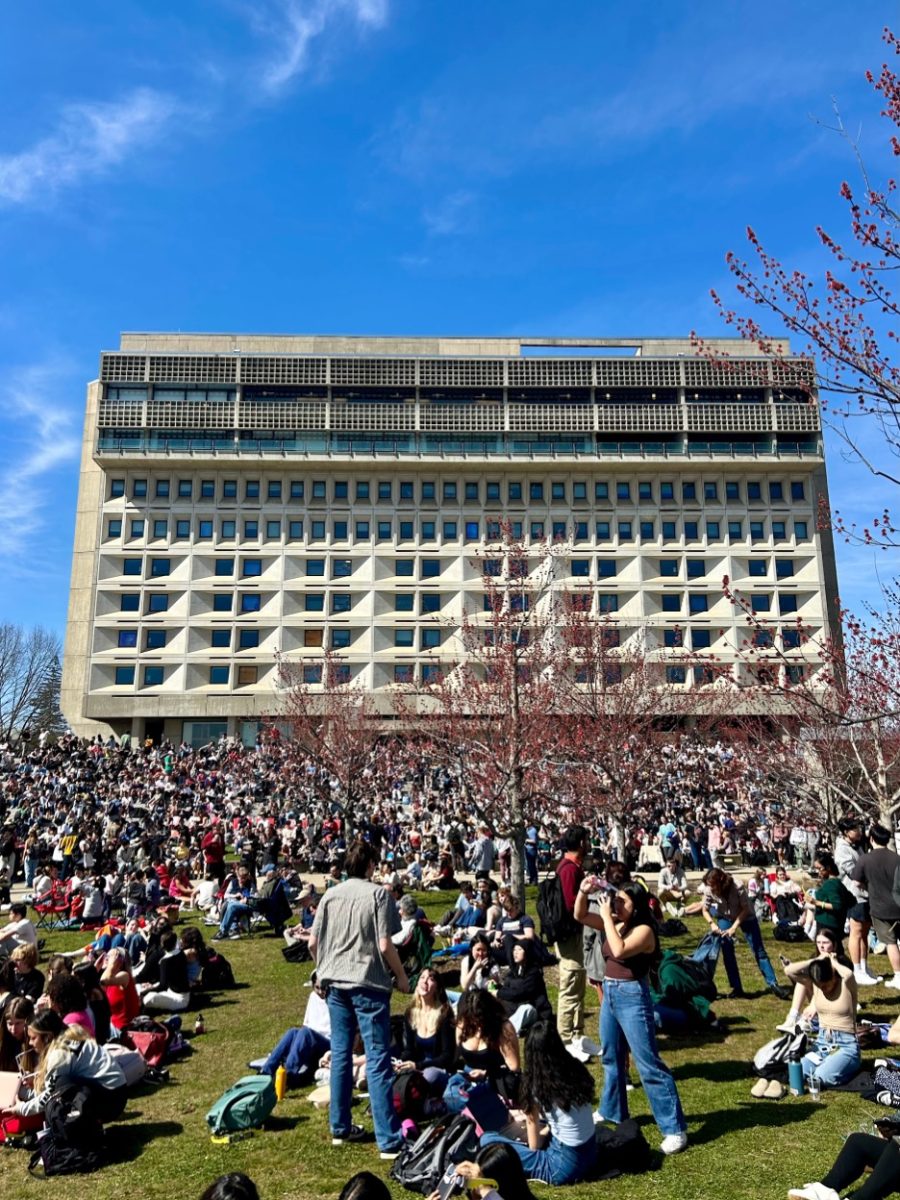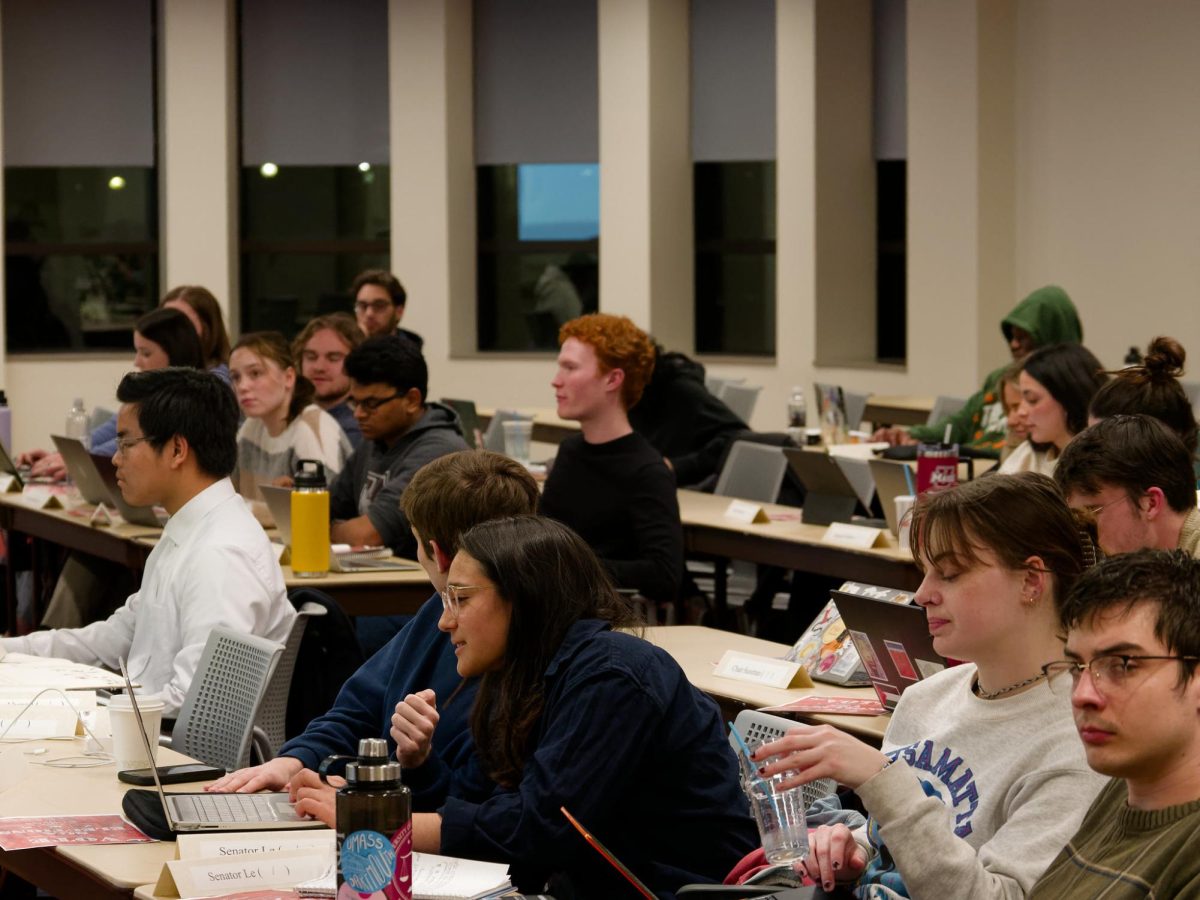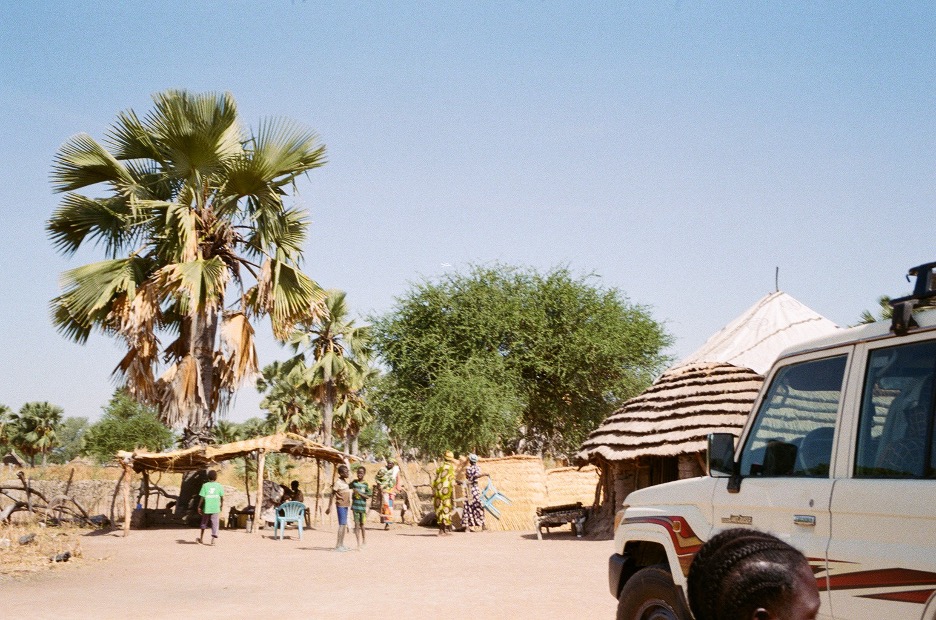For three days, 10 Tibetan Buddhist monks visiting the University of Massachusetts from the Drepung Loseling Monastery in Karnataka State in South India painstakingly created a sand mandala, an artistic display made from millions of grains of brightly colored sand, only to destroy it shortly after its completion.

A mandala, according to the monks, is meant to represent the impermanence of the natural world. It requires hours of precise construction and intense focus, but exists for only a short time before it is swept up and emptied into the nearest moving body of water so that its positive energy might spread through the water and be carried around the world.
The mandala was begun on Wednesday morning, and from that time it was open to the public for viewing for around five hours each day. It was completed around 4 p.m. Friday, at which time it was consecrated and then destroyed. Half of its sand was distributed to the community while the other half was emptied into the campus pond.
According to a press release, the mandala constructed on the Fine Arts Center Concert Hall stage depicted the heavenly home of Buddha Akshobhya, the Unshakeable Victor for conflict resolution and peace.
Before beginning the construction, the monks engaged in a ritual cleansing ceremony, in which traditional mantras and prayers are repeated. The monks “asked the invisible spirits if the area was a proper one for mandala construction” through ritual Tibetan throat singing, as well as playing songs on traditional Tibetan instruments, such as drums and long horns.
The monks were welcomed by Chancellor Subbaswamy and his wife Mala in an opening ceremony on Wednesday morning. The chancellor, as well as the Director of the Asian Arts and Culture Program Ranjanaa Devi, were given khatas, ceremonial Tibetan scarves, as a sign of gratitude. Subbaswamy, who hails from Karnatka State himself, thanked the monks for coming to perform their art at UMass.
“This type of performance gives us a window into a world culture that we do not see on a regular basis,” said Subbaswamy at the opening ceremony. “In a time when human gatherings are becoming less and less frequent, this brings a message of peace and harmony that comes with Buddhist belief.”
Leading the monks was Rinpoche Chung Tulku, who in 1977 was recognized by his Holiness the Dalai Lama as the 14th reincarnation in the lineage of Gungbar Chungstang Rinpoche, a highly respected lama and spiritual teacher. He has been with the Drepung monastery since age 10.
“We did not come to spread our religion to the people here,” said Tulku, speaking through the monks’ translator, Mr. Lobsang Norbu. “We have come to promote peace and harmony among individuals. This can be done in two ways: by promoting kindness and compassion toward every living being and by establishing a basic foundation of respect for others in every person.”
On Friday, the monks completed their construction, and welcomed visitors to view the finished product. Senator Stan Rosenberg came to welcome the monks, and he too was presented with a khata scarf, as well as a copy of the mandala which Devi hopes he might hang in his office.
Representatives from Amherst’s Tibetan community, which encompasses over 100 displaced Tibetan families, attended both ceremonies to pay their respects to the monks and to thank them for bringing Tibetan culture to western Mass. It was estimated that over 700 people came to see the mandala over the three days, and that over 250 of those people were children.
The Drepung Monastery was originally built in Lhasa, Tibet in 1416, and once housed ten to fifteen thousand monks. After the Communist Chinese invasion in 1959, Drepung’s 6,500 monasteries were forced to close and many were destroyed. According to a press release, about 250 monks escaped to India, where they re-established themselves with the help of the Indian government as the Drepung Loselang Monastery.
With their spiritual training practices thus preserved, their ranks have swelled to more than 2,500 since then. In 1991, they established a North American seat in Atlanta, Ga., and in 1998 began an academic affiliation with Emory University.
“It was really interesting to see something so different from what you would usually see,” said UMass sophomore Rebecca Fox, who attended the closing ceremony. “I’m glad I got to see it while it was here. It really did make me reflect on the lesson of impermanence the monks were trying to convey.”
This performance kicked off the FAC’s Asian Arts and Culture 20th Anniversary schedule, which is set to hold a variety of visual, musical, and performing arts from Asian artists in the coming weeks.
Conor Snell can be reached at [email protected].












